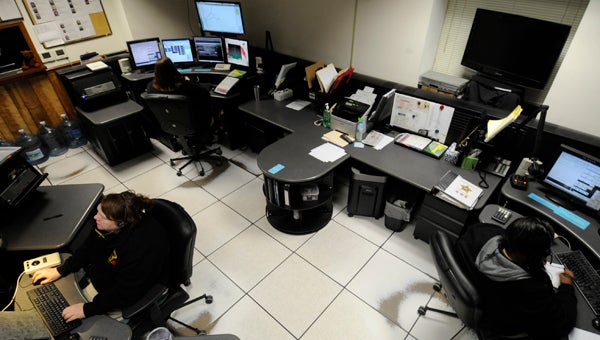Telecommunicators given go ahead for Emergency Medical Dispatch
Published 6:30 pm Wednesday, January 6, 2016

VAIL STEWART RUMLEY | DAILY NEWS
CONTROL CENTER: Telecommunicators answer incoming calls at the Beaufort County Sheriff’s Office 911 Center. As of Wednesday, they will be able to help 911 callers through certain medical emergencies while EMS is in route.
The Beaufort County Sheriff’s Office 911 Center launched its Emergency Medical Dispatch program Wednesday — a program that will allow telecommunicators to walk 911 callers through life-saving measures while EMS is on its way.
It’s a big change for telecommunicators, one that will be heard by every 911 caller. Just as with 911 calls for assistance from law enforcement, telecommunicators will be able to prioritize EMS calls. But for any medical emergency, they will also be follow a new protocol, asking callers a series of questions to first identify, then potentially assist the caller’s medical emergency.
Establishing EMD in Beaufort County has been six months of hard work, Williams said, though the movement in that direction has been longer in the making.
“It’s just another step toward tying the whole EMS system together for the benefit of the citizens,” Williams said.
For the past year and half, a cohesive plan to enhance emergency services emerged in Beaufort County. One part involved providing all residents access to paramedic-level service and strategically placing paramedic-manned Quick Response Vehicles in areas lacking coverage. Another included training the county’s volunteer fire squads in pit crew CPR, a method proven to increase survival rates for heart attack victims, and certified as first responders, which allows volunteers to give basic first aid while waiting for EMS crews to arrive.
“We’re all different spokes on that wheel,” said Crystal Marriner, BCSO 911 Center supervisor.
Marriner has been a telecommunicator for 14 years. She’s also a trained paramedic. Over the years, she said she’s answered many calls in which her emergency medical training could have been of assistance, but was unable to do anything but dispatch crews to the scene. Marriner said that she and the other county telecommunicators welcome the change to EMD, simply because they can now use the knowledge they already had, with the help of a set protocol issued by the National Academy of Emergency Medical Dispatchers.
“We know how to do it, but because we’re EMD, we can actually do it,” Marriner said. “(Some) say the liability of EMD is too high. To me, the liability of not doing it is much higher.”
Until Wednesday, if a person called 911 because a loved one was having a heart attack, a telecommunicator was only allowed to encourage the caller to do CPR if they knew it. Under EMD, they can now walk someone through doing CPR and get the process underway.
“That we have that 12-year-old doing CPR on Grandma or Grandpa, instead of just lying there — that may mean the difference between them seeing another Christmas,” Marriner said.
The program also allows several telecommunicators to assist with the same emergency: while one may be leading a caller through a series of questions designed to narrow down the nature of the emergency, then giving instructions as to what to do, another might be mapping the caller’s location and dispatching the closest paramedics to the scene.
Marriner pointed out that Beaufort County’s unique geography — 858 square miles divided in half by the Pamlico River — means a medical emergency in a rural area can pose logistical problems, mainly that EMS may not be close enough. EMD is a necessity, she said.
“It means saving lives overall,” Marriner said.
Both Williams and Marriner look forward to their first success — when a telecommunicator walks someone through the Heimlich maneuver, or assists a baby into the world via a 911 call, or meeting someone whose life they helped save.
“There will be those moments that will be great like that, and moments that won’t be so great,” Williams said.
EMD will mean an adjustment for both telecommunicators and callers. Marriner reminded callers to be patient: in order to give out live-saving advice, telecommunicators must follow the established protocol.
“Just because we’re taking the extra steps and asking you these key questions doesn’t mean that help isn’t being sent you,” Marriner said.
For Williams, Wednesday’s EMD launch is an achievement, one shared by the sheriff’s officer, EMS, county staff and more, but the telecommunicators put a great deal of work in training alone.
“I can’t commend these employees enough for how hard the have worked to get this done — it’s been six long months,” Williams said.




